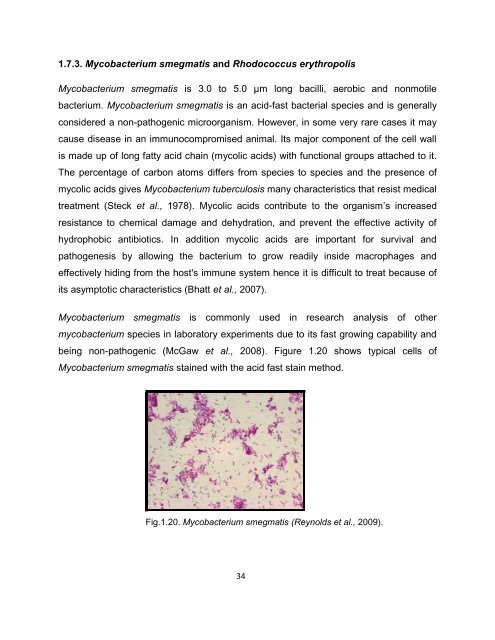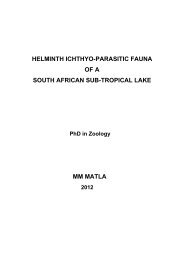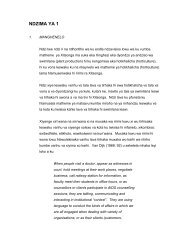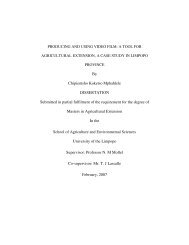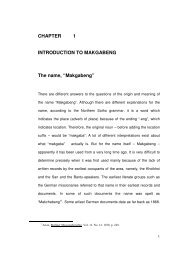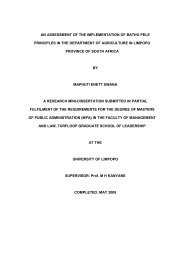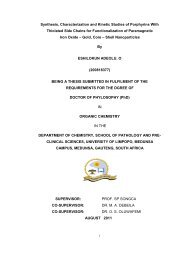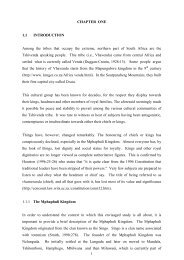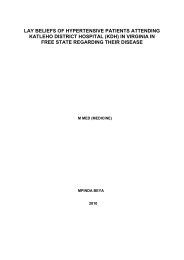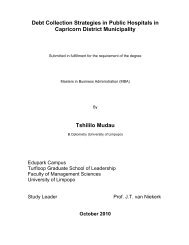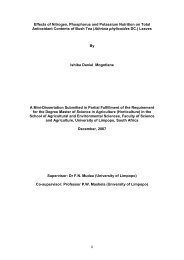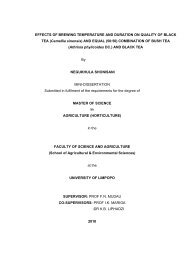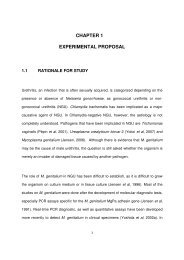Mmushi T MSc (Microbiology).pdf
Mmushi T MSc (Microbiology).pdf
Mmushi T MSc (Microbiology).pdf
You also want an ePaper? Increase the reach of your titles
YUMPU automatically turns print PDFs into web optimized ePapers that Google loves.
1.7.3. Mycobacterium smegmatis and Rhodococcus erythropolis<br />
Mycobacterium smegmatis is 3.0 to 5.0 µm long bacilli, aerobic and nonmotile<br />
bacterium. Mycobacterium smegmatis is an acid-fast bacterial species and is generally<br />
considered a non-pathogenic microorganism. However, in some very rare cases it may<br />
cause disease in an immunocompromised animal. Its major component of the cell wall<br />
is made up of long fatty acid chain (mycolic acids) with functional groups attached to it.<br />
The percentage of carbon atoms differs from species to species and the presence of<br />
mycolic acids gives Mycobacterium tuberculosis many characteristics that resist medical<br />
treatment (Steck et al., 1978). Mycolic acids contribute to the organism’s increased<br />
resistance to chemical damage and dehydration, and prevent the effective activity of<br />
hydrophobic antibiotics. In addition mycolic acids are important for survival and<br />
pathogenesis by allowing the bacterium to grow readily inside macrophages and<br />
effectively hiding from the host's immune system hence it is difficult to treat because of<br />
its asymptotic characteristics (Bhatt et al., 2007).<br />
Mycobacterium smegmatis is commonly used in research analysis of other<br />
mycobacterium species in laboratory experiments due to its fast growing capability and<br />
being non-pathogenic (McGaw et al., 2008). Figure 1.20 shows typical cells of<br />
Mycobacterium smegmatis stained with the acid fast stain method.<br />
Fig.1.20. Mycobacterium smegmatis (Reynolds et al., 2009).<br />
34


